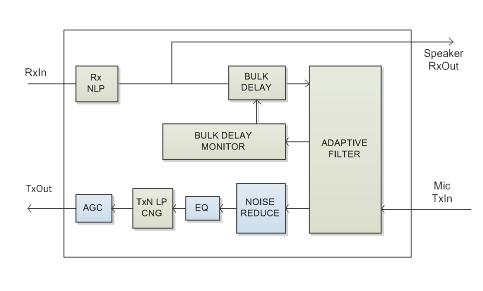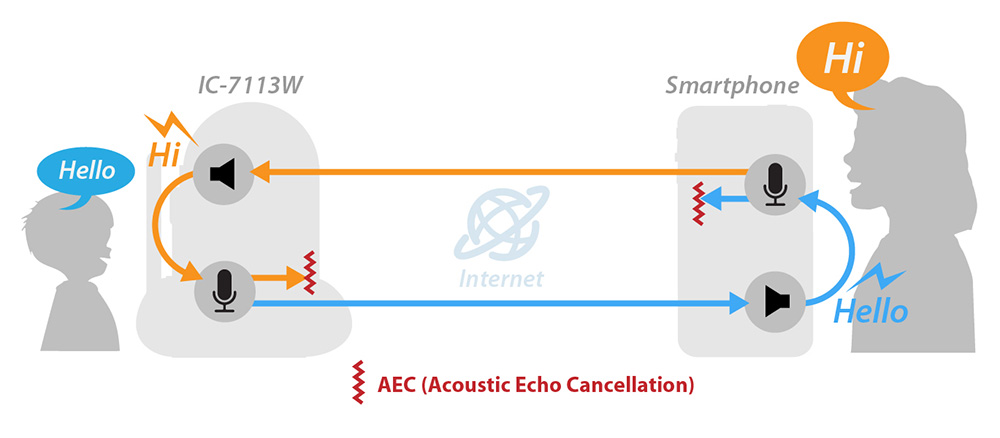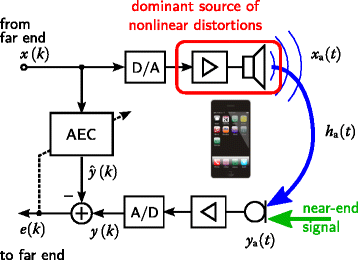

Essentially, no two AECs will be configured the same way, and only an experienced integrator can properly program the AEC and configure the gain structure. We’ve seen systems that can handle more than 100 microphones.Īn AEC system has to be tuned to the individual requirements of the room and the sound system components it’s going to be handling. A separate AEC algorithm for every mic is a very effective way to control acoustic echo, even in very large rooms. sure the acoustic echo cancellation box and the noise suppression box are checked. In particular you should look for a digital signal processor (DSP) that can do per mic cancelling. The computers audio settings can create a feedback loop that repeats. Also, most video conferencing codecs provide minimal AEC but we typically recommend that if you’re going to be using more than two microphones – some will say more than one – you need an outboard AEC with more features and more processing power.
ACOUSTIC ECHO CANCELLATION FULL
Any time a mic and speaker are used, only AEC can provide full duplex (two-way) communication without echo.

You need AEC for any conferencing system, even if it is teleconferencing with just one local room mic and speaker. It’s either use a powerful AEC, or give up on the idea of having a normal two-way discussion because the only way to prevent echo without an AEC is to make sure the local mics are off when the far end is talking. If you want a high-quality conferencing system, AEC is a necessity.

This is powered by an algorithm that handles comparing and cancelling almost instantaneously, and represents an accomplishment that requires a significant amount of digital signal processing. If any of the audio matches, it immediately removes it by creating adaptive filters to prevent echo. In brief, an AEC samples audio from the far side as it comes in and compares it to audio from inputs on the near side. AEC is an effective way to prevent the recirculation of reflected sound waves in a conferencing environment, and the technology is quite remarkable. The fix for this is Acoustic Echo Cancellation (AEC). This is done by means of adaptive ltering techniques. Since the conditions in the room may vary continuously (people moving around being an obvious example), the model needs to be updated continuously. When the speaker on the near end is active with far end audio, near end microphones can pick up that audio and recirculate it, creating echo. In an acoustic echo cancellation algorithm, a model of the room impulse response is identied. But acoustic echo created by microphone-speaker coupling demands a more robust solution.Īcoustic echo happens in a conferencing environment where microphones and speakers are being used in close proximity. Line echo is a product of reflections down the phone line, and telephone hybrids usually successfully handle that problem. There are two types of echo: line echo, which is easily correctable, and the much more challenging problem of acoustic echo. Bad audio can quickly derail an otherwise smooth exchange and leave participants feeling distracted and frustrated.Įcho can be a primary culprit. The proposed method shows better performance as compared to other competitive methods for acoustic echo suppression with no audible degradation in the near-end speech.Sometimes the most frustrating thing about a conference call can be the technical glitches that prevent a meeting from reaching its full productivity potential. In this method, the microphone input is modelled as a binary hypothesis process and the gain function is modified accordingly. Echo cancellation is done effectively by manipulating the modulation spectrum and employing speech uncertainty. In this paper, a new method is developed and implemented to model the echo path and estimate the echo in modulation domain. Modulation domain provides the temporal variation of the acoustic magnitude spectra which acts as an information bearing signal. In recent times, the modulation domain analysis is popularly used in speech processing, as it captures the human perceptual properties. State of the art acoustic echo suppression systems are based on either time domain or frequency domain analysis. A novel acoustic echo suppression scheme using speech uncertainty in modulation domain (MD) is proposed in this paper. All other disturbances from the near-end environment are considered as background noises. The received far-end speech gets reflected from the obstacles present in the surroundings creating acoustic echo.
ACOUSTIC ECHO CANCELLATION FREE
Quality degradation of near-end speech in mobile communication or hands free devices is mainly due to acoustic echoes and background noises.


 0 kommentar(er)
0 kommentar(er)
